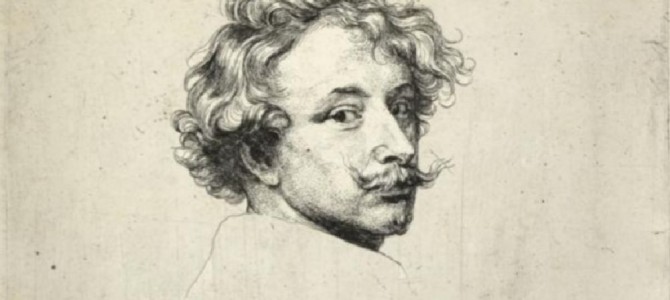
“Van Dyck: The Anatomy of Portraiture,” which opened recently at The Frick Collection in New York, is an incomplete and awkwardly designed show. It left me with a nagging doubt as to whether I could recommend it, let alone reflect on some of the pieces in it.
Although there has not been a major U.S. retrospective on this great Old Master painter for some decades now, this new exhibition has some significant curation flaws that perhaps a larger museum would not have permitted. The decision to recommend the exhibition or not, then, turns on whether the works themselves make up for their inadequate presentation, and in the end I believe that they do.
Sir Anthony Van Dyck (1599-1641) was born in Antwerp, in what is today Belgium, and rose to become one of the most prominent European artists of the seventeenth century. He painted altarpieces, historical subjects, and even a few landscapes, in addition to creating etchings and watercolors, but he is best known as a portrait painter, and one of the greatest there has ever been.
Prepare to Descend
As the official court painter to the doomed King Charles I of England and his courtiers, Van Dyck and his studio of assistants created what have come to be known as “swagger” portraits of lords and ladies, long before Ke$ha began to misuse that term, in which the well-to-do were dressed in beautifully displayed clothes, and emitted a relaxed but self-assured style. His work changed the way the English aristocracy thought about themselves, while over time, he made a profound and lasting impact on all of the portrait painters who came after him.
The adventure of actually seeing the objects in the Van Dyck exhibition however, is less glamorous than one might suppose, particularly given the stately Fifth Avenue mansion in which The Frick Collection is housed. Upon entering the museum, one finds the show begins in the basement, of all places, then continues in rooms on the ground floor. One then descends down a rather slippery and narrow spiral staircase into a Metamucil-colored, carpeted exhibition space, which at one time must have been a part of the kitchens.
Along the walls in two low-ceilinged rooms and a connecting hallway are hung drawings, engravings, and small paintings by Van Dyck and his contemporaries. Because of the spatial configuration in these galleries, it is hardly possible to move without bumping into someone, as in each room a central wall panel acts as additional, two-sided display space, creating a sort of maelstrom in which visitors are constantly jostling one another, all the while repeatedly being told (in stern but barely intelligible English) by the guards that bags must be kept on one’s shoulder.
From Peter Paul Rubens to Anthony Van Dyck
A visitor gifted with jabbing elbows however, will find himself rewarded with a number of interesting pieces on this lower level. Immediately upon descending the staircase one confronts two self-portraits of the young Anthony Van Dyck, one painted circa 1613-15, and the other painted circa 1615-17. The earlier of the two, painted around the time he was 15, is simpler and almost Impressionistic, with the young artist looking out at the world with a shy curiosity. The latter, painted a couple of years later, shows the same curiosity, only now the sitter is much more self-confident in his stare, and indeed in his sartorial choices: from his late teens onward, Van Dyck was well-known to have a keen eye for fashion.
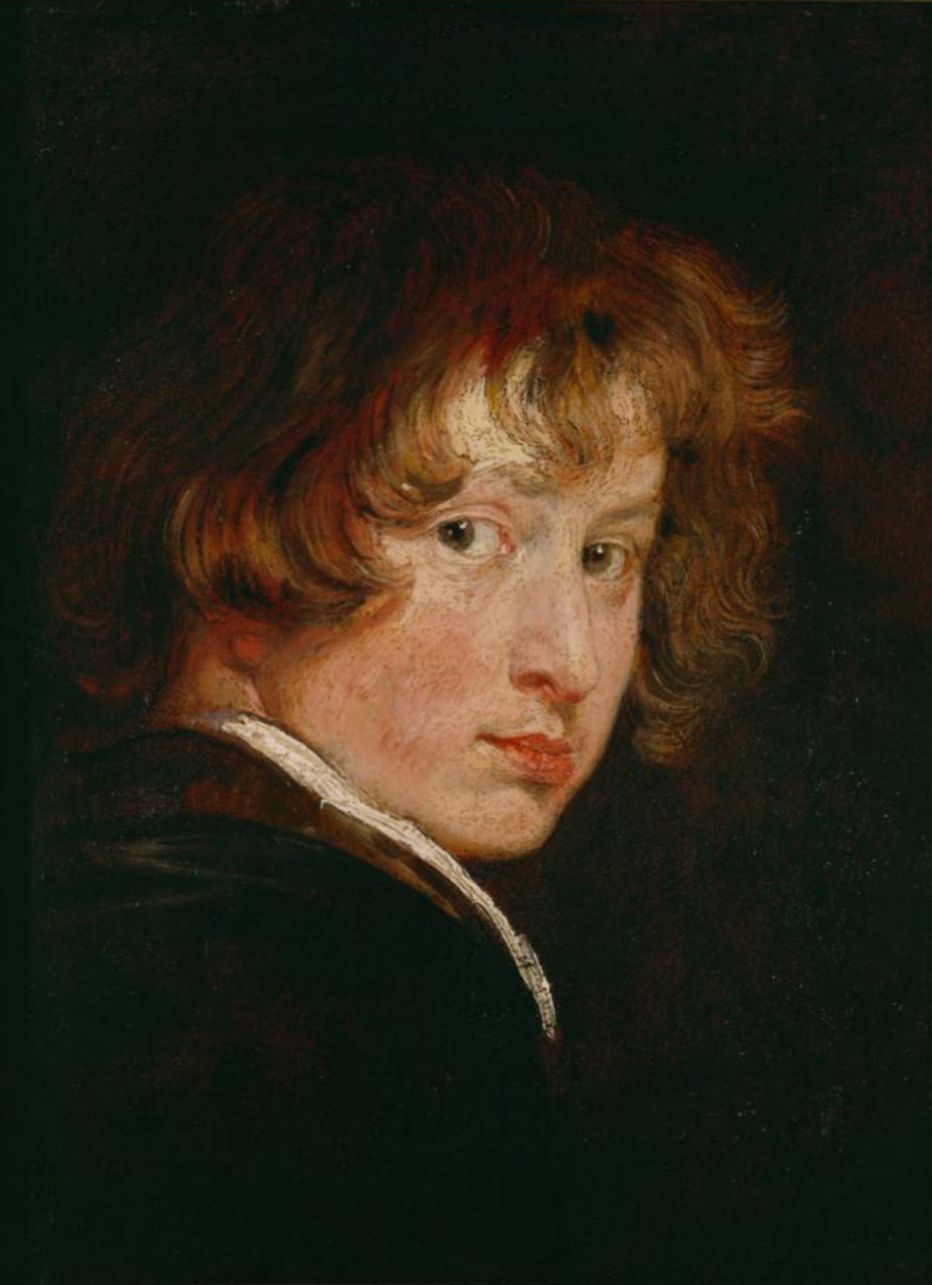
Moreover the technique, colors, and finish on the second self-portrait clearly show Van Dyck absorbing the teachings of his master, the great Flemish painter Peter Paul Rubens. In an adjoining room of the exhibition, the juxtaposition of two drawings of the same sitter by Van Dyck and Rubens shows just how the pupil learned from, but ultimately departed from the work of his teacher.
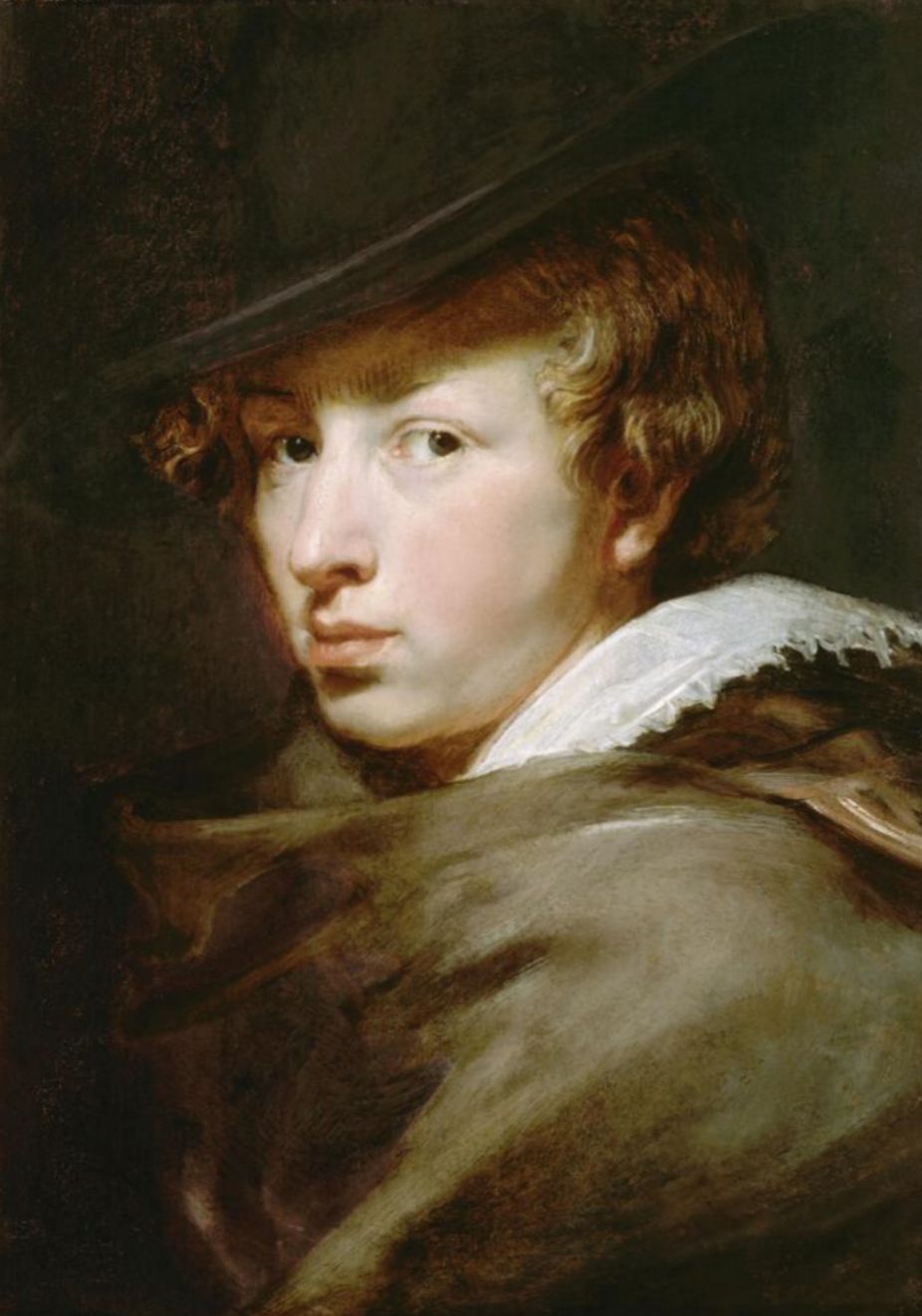
The subject, Father Nicholas Trigault, was a Jesuit missionary who in January 1617 came to Antwerp to beg for donations to help the Jesuit missions in China. Both artists used the same chalk to create their drawings, and some speculate they may have been sketching Father Trigault at the same time, but from different angles, as one would do in a life drawing class. Yet whereas Rubens’ drawing is highly finished, paying close attention to the details of the priest’s unusual costume, Van Dyck pays almost no attention to the clothing in his sketch. Instead the younger artist, then only 17, merely suggests the clothing in a cursory way, paying more attention to capturing Father Trigault’s facial expression.
Another interesting drawing in the subterranean rooms is that of King Charles I of England, depicted wearing a rather jaunty hat. It is a pity The Frick was not able to obtain any other solo portraits of Charles for this show, since the king was Van Dyck’s most important patron, and the artist painted dozens of images of the Stuart monarch. However, in “Portrait Study of Charles I,” drawn circa 1632–36, we get a more intimate, indeed slightly sad-looking king, rather than the man portrayed in official court imagery with self-assured nonchalance.
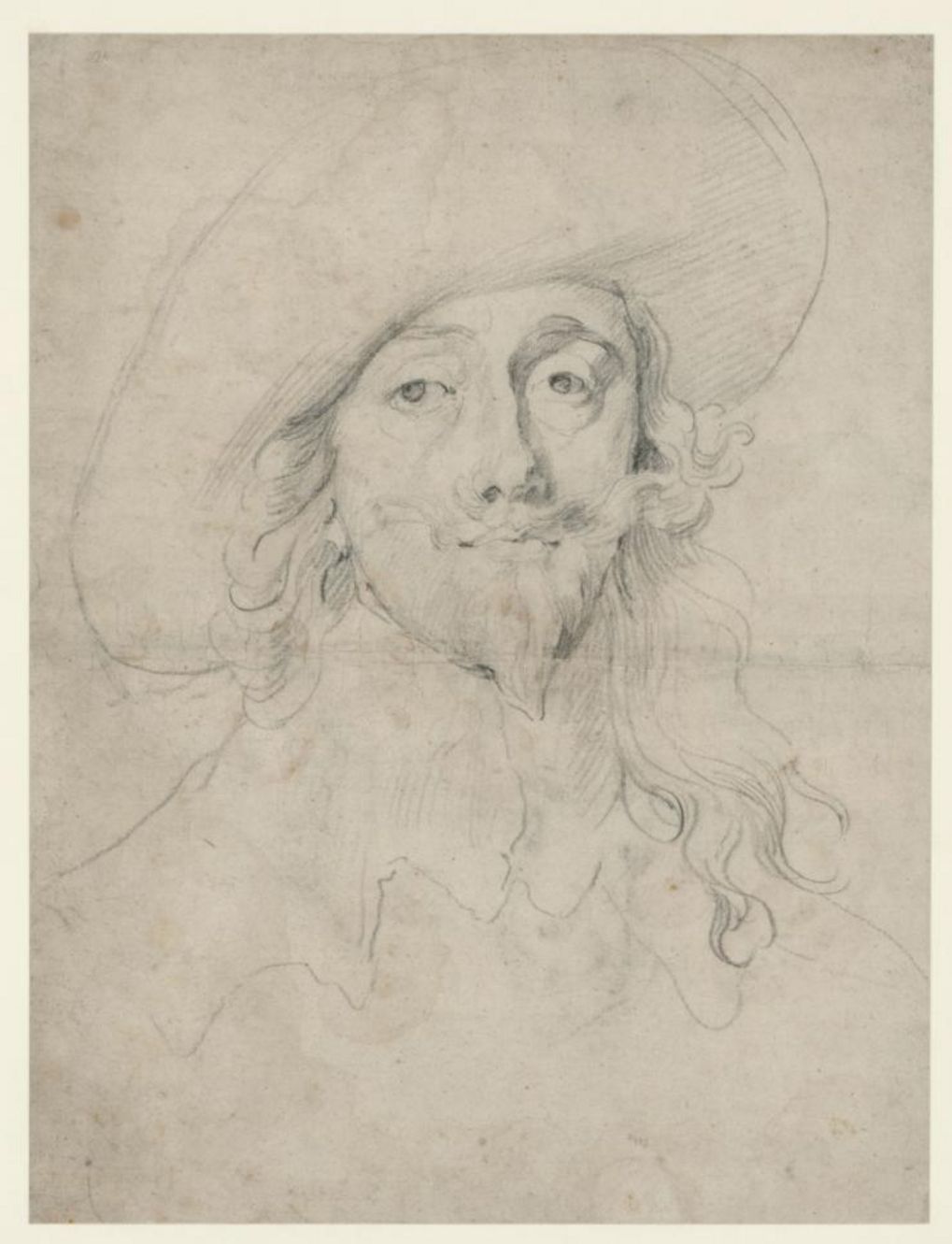
There was no way, at the time, Van Dyck could have known that some years later his sitter would be beheaded by some of the most revolting people in English history—and that’s saying something—at the Banqueting House, a London building whose ceiling was painted by Rubens.
A Striking Set of Early Portraits
Moving upstairs onto the main floor, no signage whatsoever indicates where the exhibition continues. One must pass down a long corridor to the opposite end of the house, or go through the central courtyard, to pick up the thread of the show. This is a failure of exhibition design. Just as one has spent time craning around others to look at the preparatory drawings and small pieces in the basement, the experience ends, and one has to navigate through other centuries in art history before returning to that of Van Dyck.
In the two large rooms that contain the bulk of the paintings that comprise the exhibition, I was struck first of all by the study of Van Dyck’s sister, “Head Study of a Red-Haired Young Woman Looking Down” (c. 1618–20), and Van Dyck’s nearby self-portrait of circa 1620-21. The family resemblance of Susanna Van Dyck to her brother is obvious, with her long features and tumbling waves of red hair. Yet devoid of any details that would pinpoint it as being from the seventeenth century, one could easily imagine this as a nineteenth-century Pre-Raphaelite work, or even a piece of early twentieth-century realism, with its loose brushwork and the model’s deeply introspective expression.
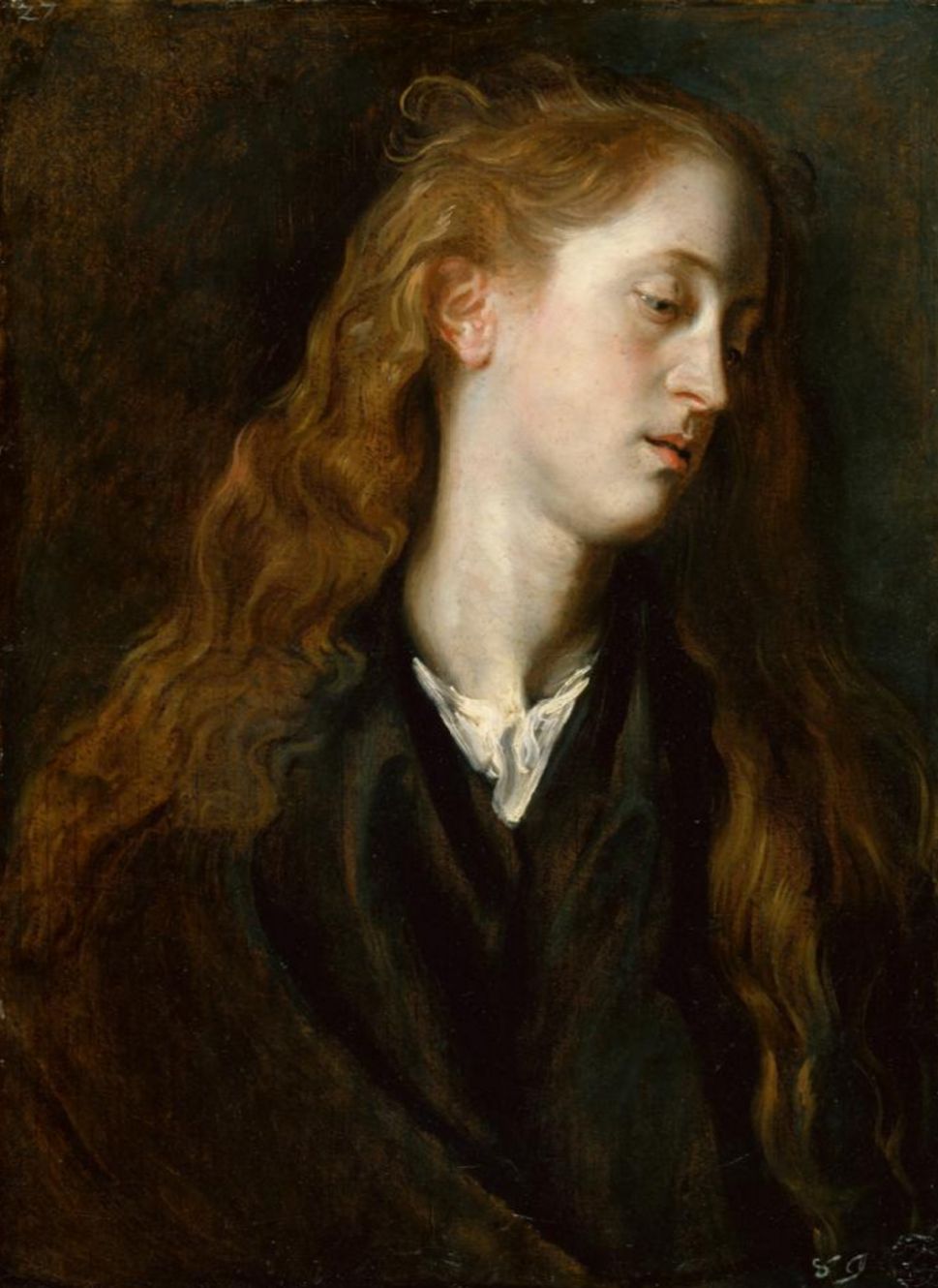
In Van Dyck’s adjoining self-portrait, the artist shows not only shows the family resemblance, but displays his unusually long, elegant fingers, a feature he often imparted to the images of those whom he painted. This is the moment in time when the confident and accomplished young man of the world is about to make his fortune.
For me, without question the star of the entire show is Van Dyck’s portrait of “Cardinal Guido Bentivoglio” (1623), on loan from the Palazzo Pitti in Florence. The majestic architectural setting and voluminous drapery, the keenly intelligent expression of the sitter, and the beautifully rendered detail of the white lace surplice against the crimson silk of the cardinal’s robes, combine to create a magnificent image of a powerful man from a powerful family, who is decidedly present in this image.
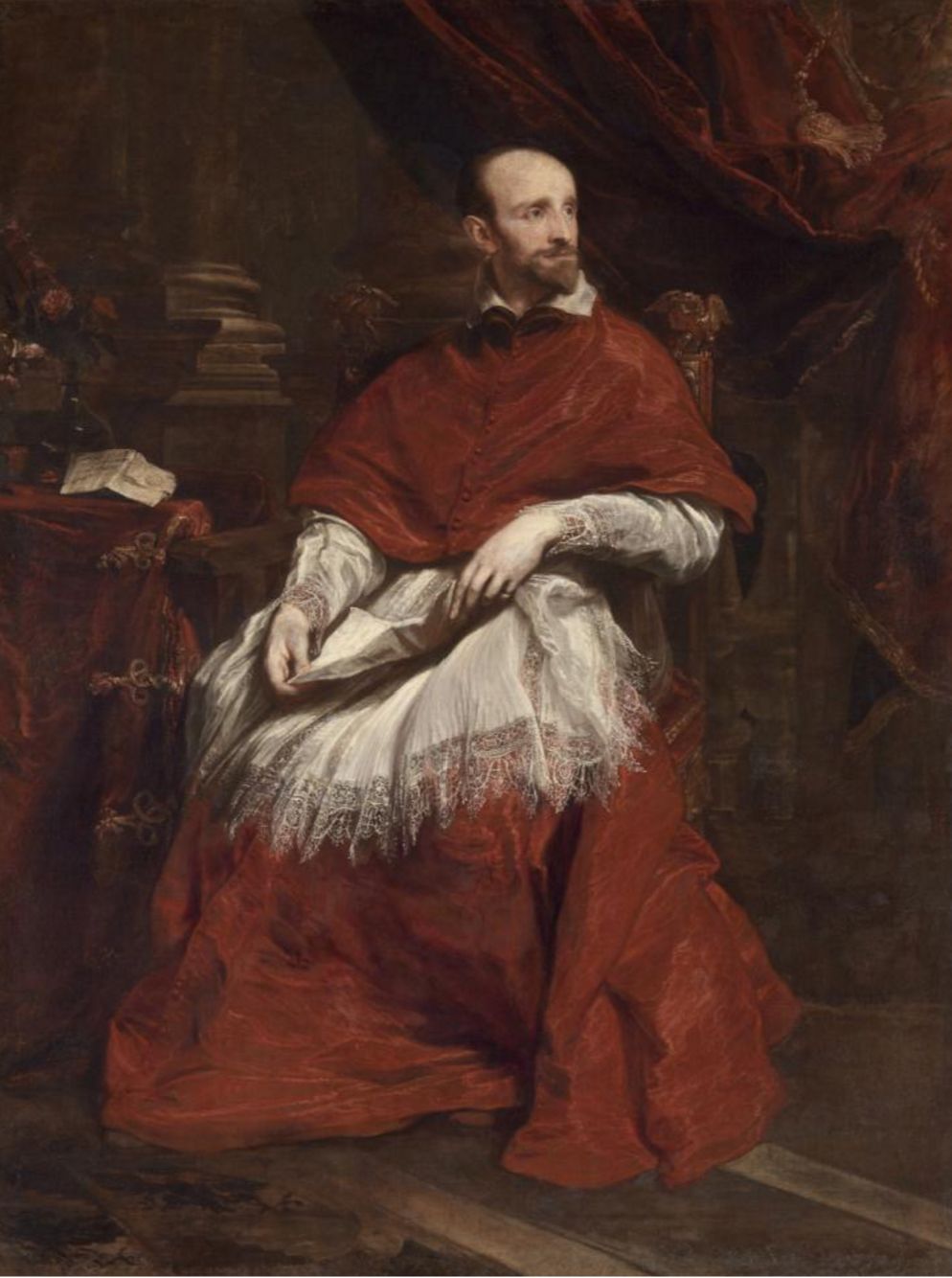
Even in the underpaint of gray ground, which Van Dyck allows to show through in the hands, one gets the sense of a real person, rather than a cipher or avatar. It is remarkable to stop and think that Van Dyck painted this when he was only about 24 years old, during his long stay in Italy, and he had not even met the man who was to become his greatest patron.
Portraits of the Rich and the Famous
That patron, of course, was the aforementioned Charles I. Appropriately enough, then, in “Charles I and Henrietta Maria Holding a Laurel Wreath” (1632), we see the painting that led to Van Dyck being knighted and appointed court painter in the same year, while his predecessor in the post was sent packing back to the Netherlands.
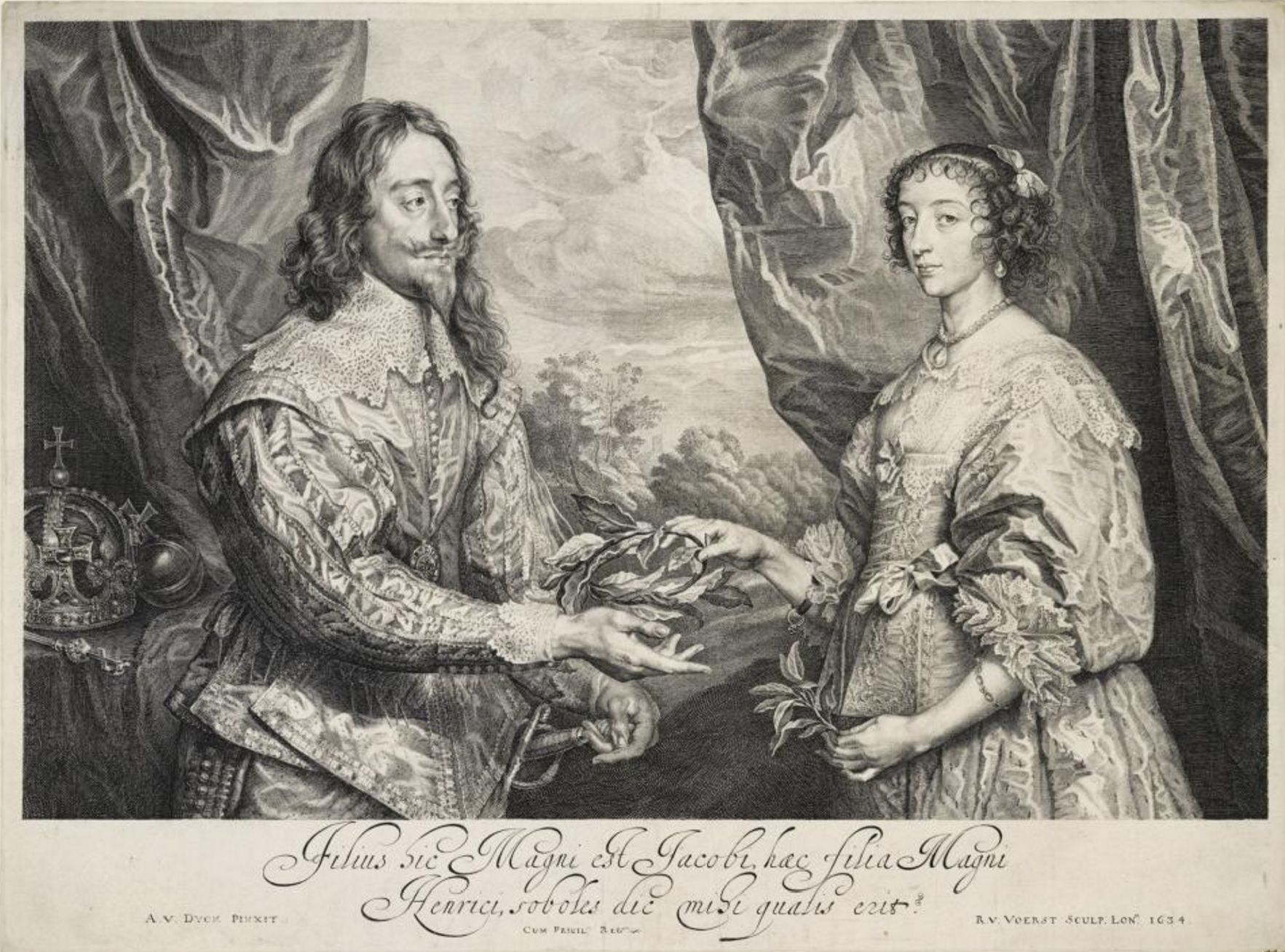
The presence of the royal crown on a table in the background is no accident, but rather a device repeated in other royal portraits, such as that of Marie Antoinette painted by Elizabeth Vigée Le Brun and currently on display at The Metropolitan Museum of Art just a few blocks away. With the trappings of monarchy off to the side, Van Dyck allows for a greater degree of informality for the royal couple, while still reminding the viewer of who is ultimately in charge.
In his “Portrait of Pomponne II de Bellièvre” (c. 1637-40), Van Dyck creates a particularly arresting image of the French ambassador to the court of Charles I. Devoid of all color in the costume other than the red sash around his waist, the courtier and art connoisseur is nevertheless given the kind of sheen a thoroughbred horse would envy, from his glossy brown hair to the intense black of his simple suit.
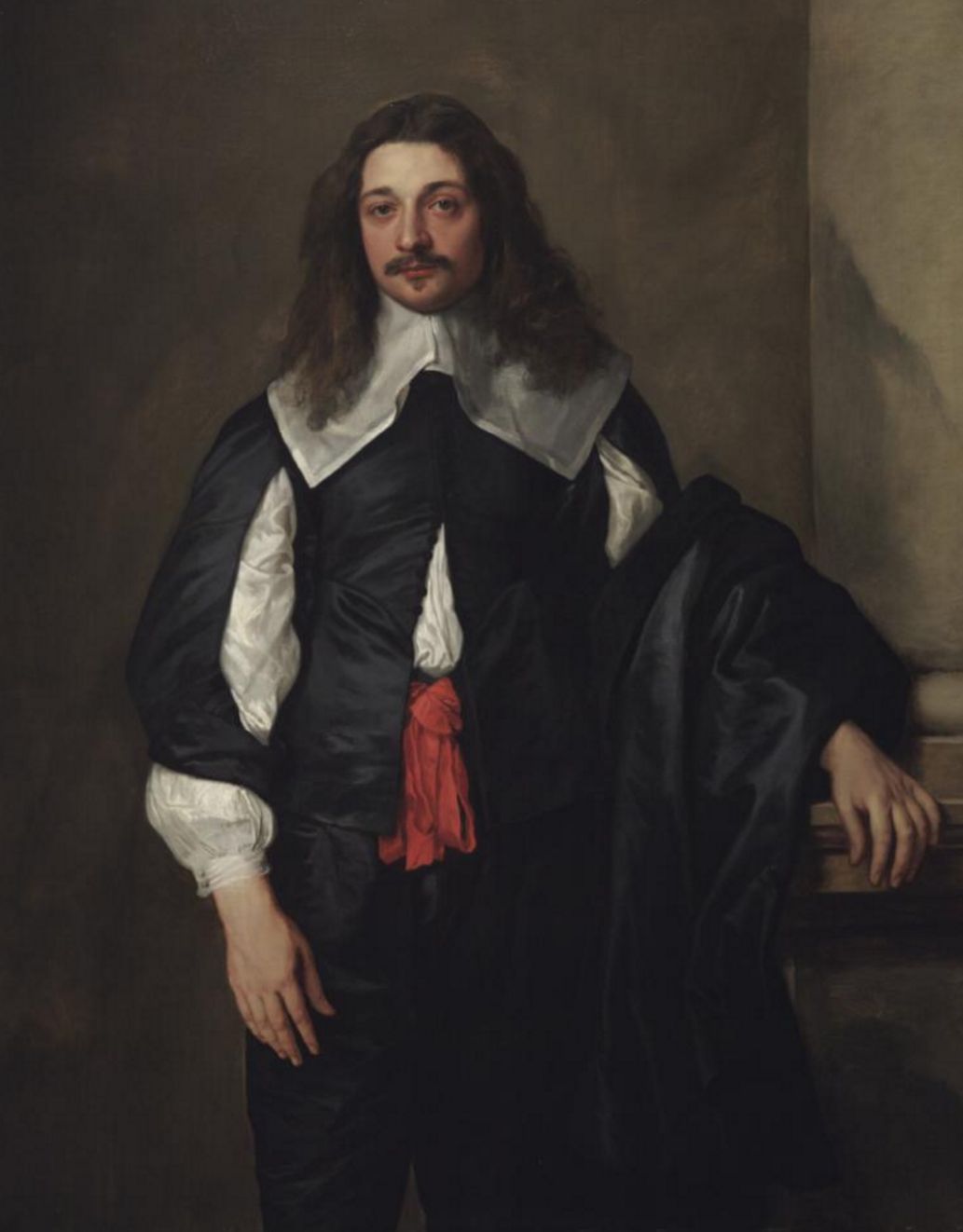
While most of his sitters expected Van Dyck to dress them in costly and flashy fabrics, in this picture Van Dyck show not only that he understood the ideals of the man whom he was painting, but that he was not simply the painter of colorful fashions. There is a wonderful quality of thoughtfulness and kindness in the ambassador’s eyes that causes the viewer to linger. Indeed, de Bellièvre was not only well-known for his charity and uprightness, he was also one of the single largest donors to an enormous civic project to house, educate, and feed the poorest of the poor in Paris.
The Two Women of Van Dyck’s Life
It seems rather coarse of The Frick to hang a portrait of Van Dyck’s mistress, “Margaret Lemon” (c. 1638), next to that of his wife, “Mary, Lady van Dyck, née Ruthven” (c. 1640), although fortunately it is the wife and not the courtesan whose image is used for the cover image of the exhibition catalogue. Here are the two most important women in the artist’s adult life, shown in a pairing which is unlikely ever to occur again, since the former painting resides in a private New York collection, while the latter is in the collection of The Prado in Madrid.
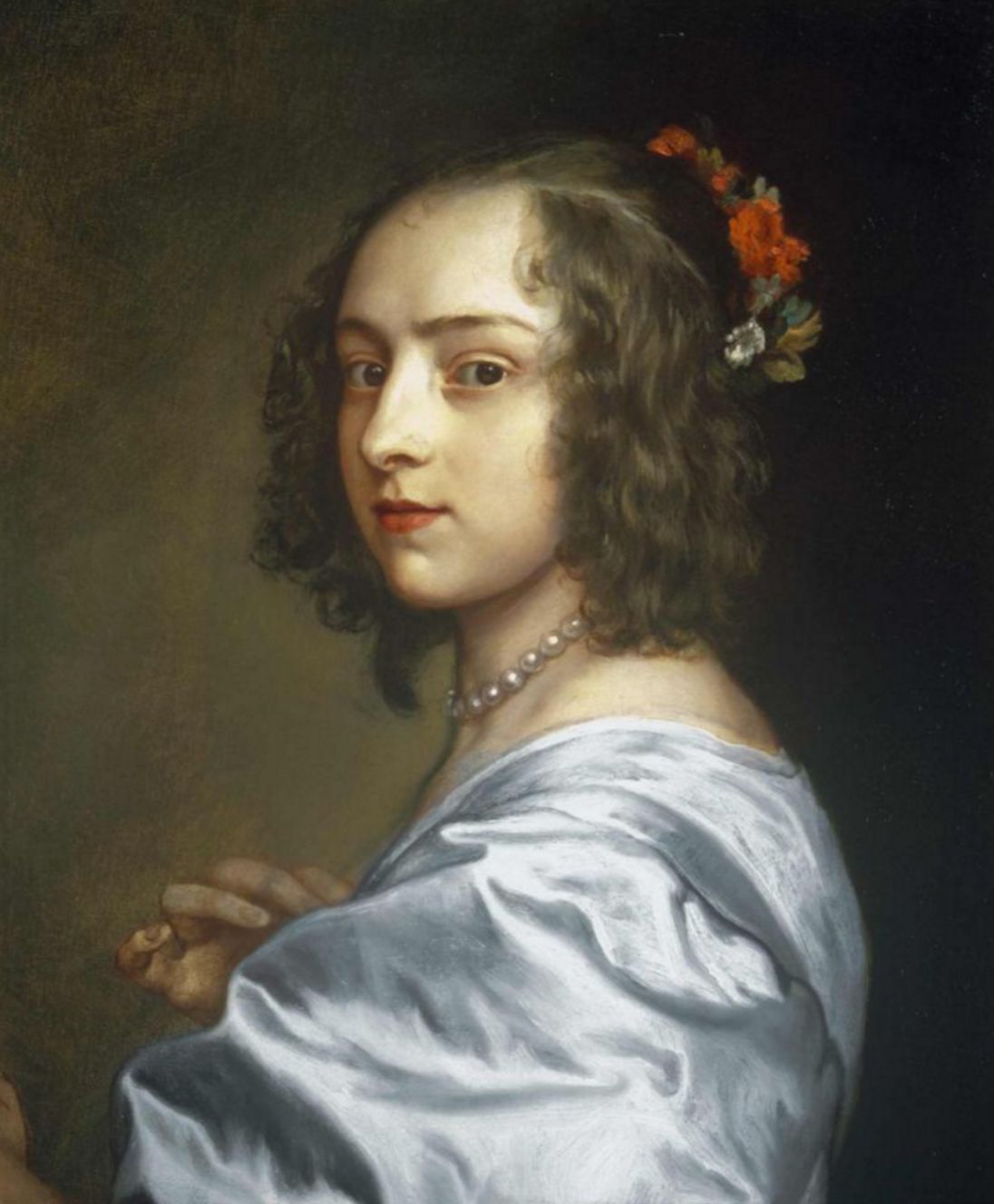
It is interesting to compare the two, of course, and not simply because we can study two different ways Van Dyck treated the color blue in drapery, either, although one should definitely take the time to stop and admire the fabric in both images.
One can clearly understand why, despite her caterpillar eyebrows, pricey prostitute Margaret Lemon bewitched Van Dyck and his purse for such a long time. Her piercing, intense stare in this picture bespeaks a tempestuous, fiery character; she was once supposedly so struck with a case of green-eyed jealousy that she tried to bite Van Dyck’s thumb off.
Her image contrasts markedly with that of the ladylike Lady Van Dyck, who proudly but piously displays the cross from the rosary chaplet she is wearing around her wrist. I audibly chuckled at the juxtaposition of these two images since, hung as they are, with the mistress to the left of the wife, it is as if Lady Van Dyck is throwing shade at the rival for her husband’s affections. Whereas the mistress is all “come hither” in her expression, Lady Van Dyck appears to be giving us some side-eye, as if to say, “I know what she’s about.”
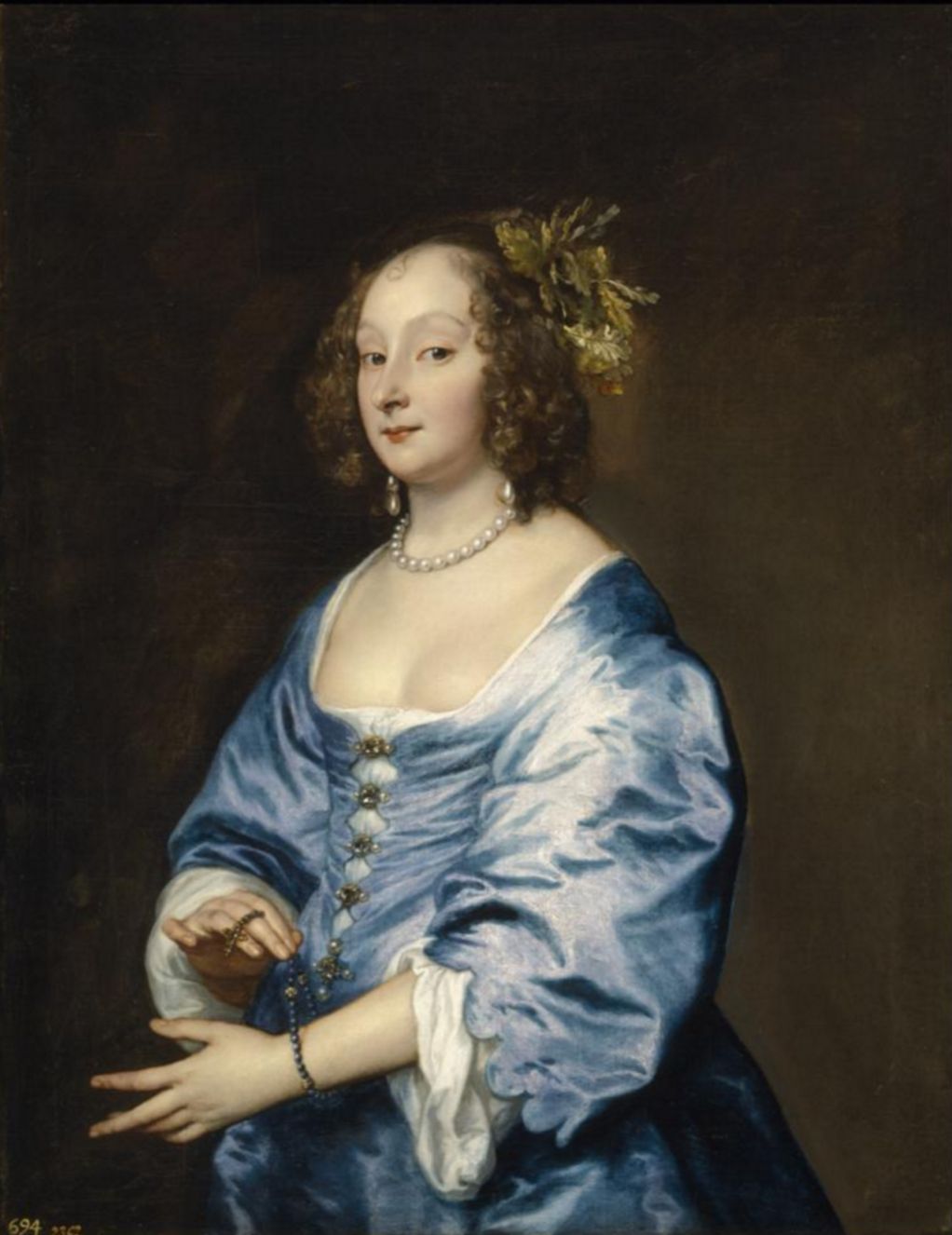
A Poor Study of Anatomy
At this point one would be forgiven for thinking that the exhibition is over, but hidden away back on the other side of the museum, in a small room next to the gift shop, is the third part of this show, which features more drawings and engravings by Van Dyck and his contemporaries.
This coda to the messy composition that preceded it contains the portraits of important men from the Flanders of the artist’s day, originally created for a rather expensive coffee table book project, and includes Van Dyck’s beautifully-rendered “floating head” self-portrait of circa 1627-1635, which is almost surrealist in appearance. A friend who had seen the exhibition the week before me did not even realize, until I told him, that he had missed this room, such is the layout and lack of direction.
This brings us back to whether you should go along to see this retrospective, if you happen to find yourself in Manhattan this spring. Certainly it contains gaps, and that is only to be expected in a museum of The Frick’s size. To their credit, they have still managed to persuade many international and private collectors to lend works to this exhibition, works most visitors will never be able to see again short of a trip across the pond or an invitation to a private home.
Yet in the end, this is an exhibition lacking most strongly the “anatomy” it bears in its title. With a few exceptions, one does not get so much of a carefully planned dissection of Van Dyck’s development as a portraitist, so much as one does of someone digging about at random, picking out bits and throwing them on the examining table. Anatomy is supposed to be an orderly study, in which we clearly study and delineate connections between the components, rather than simply choosing pieces at a whim, with an eye here, and a kidney there; it is hard to see this show as anything like an anatomy lesson.
Nevertheless, given the rarity and quality of many of the works on display, the reader would be well-advised to visit this exhibition despite, rather than because of, the show itself.
“Van Dyck: The Anatomy of Portraiture” is at The Frick Collection until June 5, 2016.









